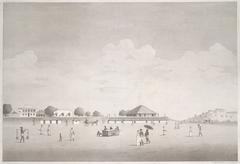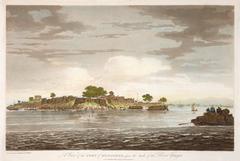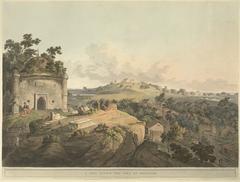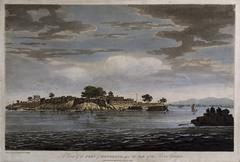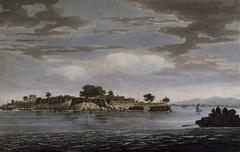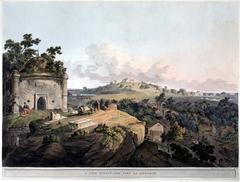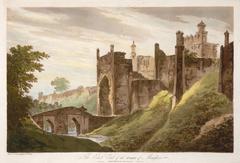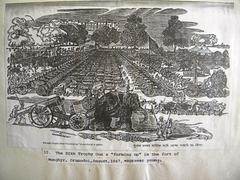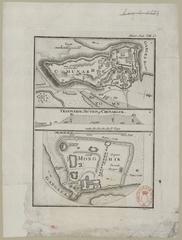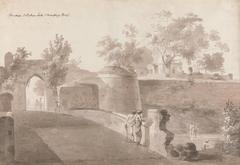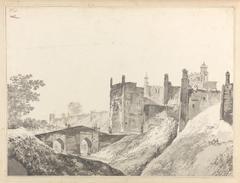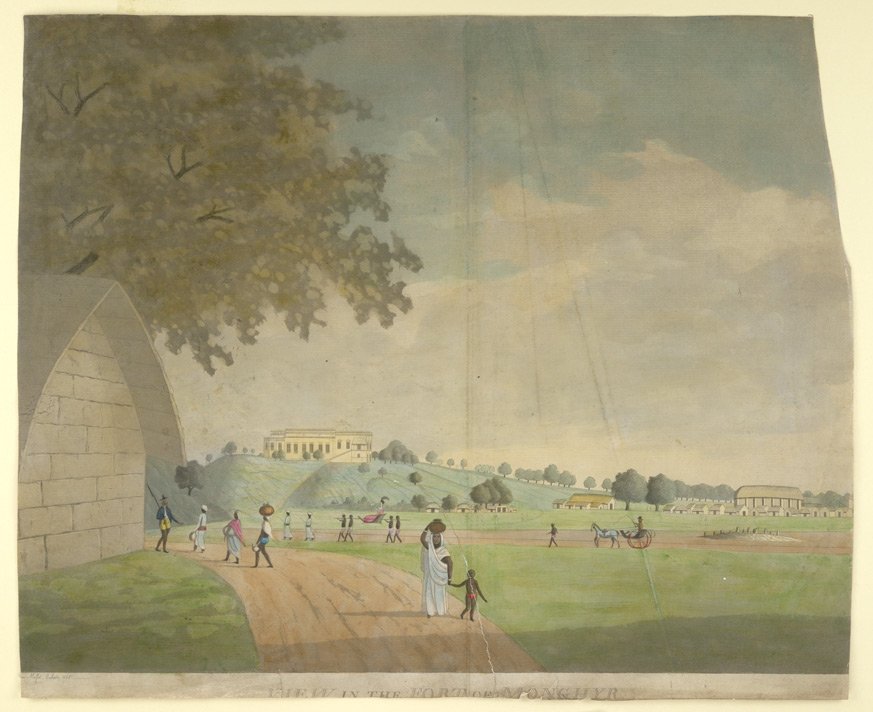
Munger Fort Visiting Hours, Tickets, and Historical Sites in Munger, India
Date: 18/07/2024
Introduction
Munger Fort, situated on the southern bank of the Ganges River in Bihar, India, is a historical marvel offering a rich tapestry of cultural and architectural heritage. The fort’s origins can be traced back to the Gupta Empire, around 320 to 550 CE, making it a site of considerable importance during ancient times. Its strategic location has made it a key military and trade hub throughout various historical periods, including the medieval era under the Delhi Sultanate and the Mughal Empire, and later during British colonial rule. This comprehensive guide aims to equip travelers with all the necessary information for visiting Munger Fort, including its historical significance, architectural features, cultural relevance, and practical tips for a memorable trip. From the imposing Lal Darwaza to the sacred Kashtaharini Ghat and the revered Tomb of Pir Shah Nufa, Munger Fort is a treasure trove of history and culture that continues to attract visitors from across the globe. For more detailed historical insights and visitor tips, the Archaeological Survey of India and other credible sources provide extensive information.
Table of Contents
- Introduction
- Ancient Origins and Early History
- Medieval Period and Islamic Influence
- British Colonial Era
- Architectural Features
- Cultural Significance
- Preservation and Tourism
- Visitor Tips
- Nearby Attractions
- FAQs
- Conclusion
Munger Fort - Visiting Hours, Tickets, and Historical Significance
Ancient Origins and Early History
Munger Fort, located in the city of Munger in Bihar, India, is a historical edifice with roots tracing back to ancient times. The fort’s origins are often attributed to the reign of the Gupta Empire, which ruled from approximately 320 to 550 CE. The strategic location of Munger on the southern bank of the Ganges River made it a significant military and trade hub. The fort’s early history is shrouded in mystery, but it is believed to have been a site of considerable importance during the Gupta period.
Medieval Period and Islamic Influence
The fort gained prominence during the medieval period, particularly under the rule of the Delhi Sultanate and later the Mughal Empire. In the 13th century, the fort came under the control of the Khilji dynasty, with Sultan Alauddin Khilji recognizing its strategic importance. The fort was further fortified and expanded during this period to serve as a stronghold against invasions.
In the 16th century, the fort fell into the hands of the Mughal Empire. Emperor Akbar, recognizing the fort’s strategic significance, ordered extensive renovations and expansions. The fort’s architecture from this period reflects a blend of Islamic and Hindu styles, indicative of the cultural amalgamation that characterized Mughal rule. The fort’s robust walls, bastions, and gates were designed to withstand prolonged sieges, making it one of the most formidable military structures of its time.
British Colonial Era
The British East India Company took control of Munger Fort in the late 18th century, following the Battle of Buxar in 1764. The fort was used as a military garrison and administrative center by the British. During this period, several modifications were made to the fort’s structure to accommodate British military needs. The British also established an armory and a gun factory within the fort, which played a crucial role in their military campaigns in the region.
Architectural Features
Munger Fort is renowned for its impressive architectural features, which reflect the various cultural influences it has undergone over the centuries. The fort’s massive walls, built from stone and brick, are punctuated by bastions and towers that provide panoramic views of the surrounding landscape. The fort’s main entrance, known as the Lal Darwaza (Red Gate), is an imposing structure adorned with intricate carvings and inscriptions.
Inside the fort, several notable structures stand out. The Kashtaharini Ghat, a bathing ghat on the banks of the Ganges, is believed to have been constructed during the Gupta period. The ghat is associated with several legends and is considered a sacred site by Hindus. Another significant structure within the fort is the Tomb of Pir Shah Nufa, a revered Sufi saint. The tomb, built in the Mughal architectural style, attracts devotees from across the region.
Cultural Significance
Munger Fort holds immense cultural significance for the local population. The fort is not only a symbol of the region’s rich history but also a center of religious and cultural activities. The fort’s various temples, mosques, and tombs are sites of pilgrimage for Hindus and Muslims alike. The fort’s annual festivals, such as the Chhath Puja and Urs of Pir Shah Nufa, draw large crowds and are celebrated with great fervor.
Preservation and Tourism
In recent years, efforts have been made to preserve and promote Munger Fort as a tourist destination. The Archaeological Survey of India (ASI) has undertaken several restoration projects to maintain the fort’s structural integrity and historical authenticity. The fort is now a popular tourist attraction, drawing visitors from across India and beyond.
Tourists visiting Munger Fort can explore its various historical and architectural features, including the Lal Darwaza, Kashtaharini Ghat, and the Tomb of Pir Shah Nufa. The fort’s strategic location on the banks of the Ganges offers breathtaking views and opportunities for photography. Guided tours are available, providing visitors with in-depth insights into the fort’s history and significance.
Visitor Tips
For a memorable visit to Munger Fort, tourists should consider the following tips:
- Best Time to Visit: The ideal time to visit Munger Fort is during the winter months (October to March) when the weather is pleasant and conducive to sightseeing.
- Entry Fees and Timings: The fort is open to visitors from 9:00 AM to 5:00 PM. Entry fees may apply, and it is advisable to check the latest information from official sources before planning a visit.
- Guided Tours: Hiring a local guide can enhance the visitor experience by providing detailed historical and cultural context.
- Photography: The fort offers numerous picturesque spots, so carrying a camera is recommended. However, visitors should be mindful of any photography restrictions in certain areas.
- Local Cuisine: Visitors can explore local eateries in Munger to sample traditional Bihari cuisine, which includes dishes like litti chokha, sattu paratha, and various sweets.
Nearby Attractions
While visiting Munger Fort, tourists can also explore other nearby attractions:
- Bhimbandh Wildlife Sanctuary: A natural reserve known for its hot springs and diverse wildlife.
- Karnachaura Temple: An ancient temple dedicated to Lord Shiva, offering scenic views and spiritual solace.
- Sita Kund: A hot water spring associated with the legend of Sita from the Ramayana.
FAQs
- What are the visiting hours for Munger Fort?
- Munger Fort is open to visitors from 9:00 AM to 5:00 PM.
- How much are tickets for Munger Fort?
- Entry fees may apply, and it is advisable to check the latest information from official sources before planning a visit.
- Is Munger Fort accessible for wheelchair users?
- Accessibility may be limited in certain areas; it is recommended to contact local authorities for detailed information.
Conclusion
In conclusion, Munger Fort stands as a testament to India’s rich historical and cultural heritage. Its well-preserved structures, including the Lal Darwaza and the Tomb of Pir Shah Nufa, offer a glimpse into the architectural brilliance of various ruling dynasties, from the Gupta Empire to the British Colonial era. The fort’s cultural significance is equally profound, serving as a center for religious activities and annual festivals that draw large crowds. Efforts by the Archaeological Survey of India to preserve and promote this historical site have made it a popular tourist destination, providing visitors with a unique opportunity to explore a piece of India’s illustrious past. For those planning a visit, the winter months from October to March offer the most pleasant weather for sightseeing. Whether you’re a history enthusiast, architecture buff, or cultural explorer, Munger Fort promises a memorable and enriching experience. For more travel tips and updates, consider downloading the Audiala mobile app.

